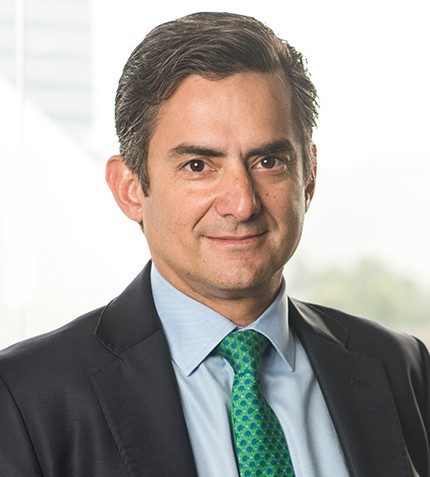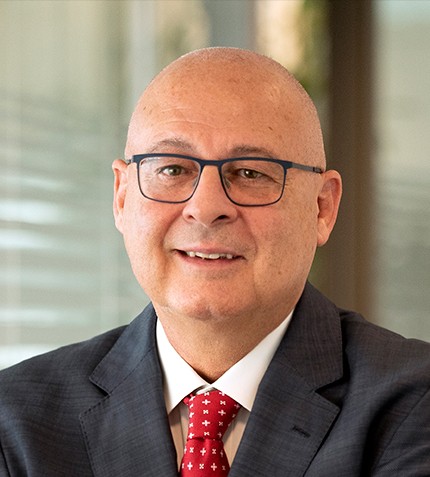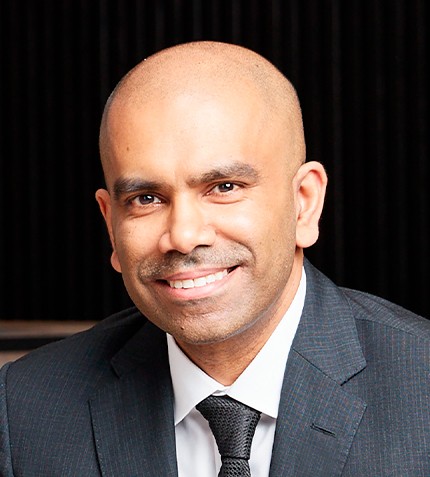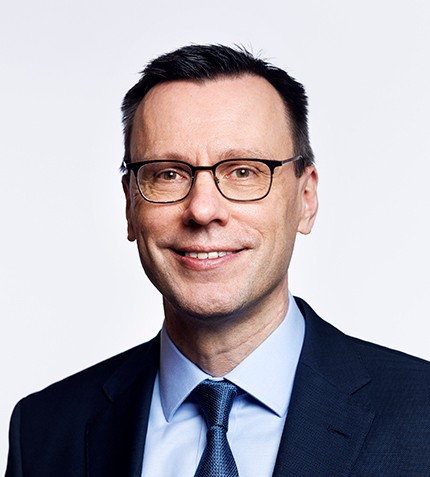
“It is essential to find ways to improve the use of the mining canon and royalties, to strengthen institutional capacities, to speed up the execution of projects and to achieve greater transparency.”
José Augusto Palma
NATIONAL SOCIETY OF MINING, PETROLEUM AND ENERGY (SNMPE); PRESIDENT OF THE ORGANIZING COMMITTEE, INTERNATIONAL GOLD, SILVER AND COPPER SYMPOSIUM
What can we expect from the International Gold, Silver and Copper Symposium this year?
The Symposium will be held from May 10 to 12, 2022. It will be a hybrid event, so it will be possible to attend in person in Lima or to join virtually. This has allowed us to expand the range of exhibitors and participants. This is the fourteenth edition of the Symposium, and the biggest novelty is that we are including copper for the first time as one of the metals within the event.
The event will host top-level speakers such as Dani Rodrik, professor at Harvard University who will talk about the current political and economic context; Evy Hambro, global head of thematic investment at BlackRock, who will give his vision on the mining sector; and Rohitesh Dhawan, CEO of ICMM, who will speak about the equilibrium in sustainability and the extractive industries. In addition, the CEOs of companies such as Newmont, Freeport McMoran, Asarco, Minera Poderosa and Compañía de Minas Buenaventura, among others, have already confirmed their participation.
What will be the main themes of the Symposium?
We have divided the Symposium into three main themes: market, ESG and technology, although ESG will be common to all days. On the first day, we will learn about the current global economy and metals supply and demand trends. We will also analyze the most important elements for investors who are committed to the development of projects in our region.
The second day will start with an intervention by ICMM's Rohitesh Dhawan on balancing sustainability and extractive industries. It will continue with a conference that we have entitled "Mining countries in the face of the world ahead", where we analyze the metals of the future, and explore how countries like Peru or Chile can support the transition towards a green economy. Next, we will turn to the climate change agenda. Then, we will focus on technological solutions applied to traceability, which is a way to address illegal mining. Subsequently, we will analyze how mining can make an essential contribution to development at the regional level. Finally, we will cover the topic of social conflicts that are unfortunately prevalent in our country.
On the third day, which will be dedicated to innovation, we will focus on many sustainability issues, such as the Future of Work. We will cover topics such as inclusion and diversity, and we will also discuss the skills that will be needed in an increasingly technological world.
Could you highlight the SNMPE’s most important initiatives in the last year?
We are following a proactive agenda instead of only a reactive one. This means we are working to anticipate problems such as social conflicts and solve them jointly with the government, the civil society and mining companies.
A key aspect involves significantly improving the distribution of the resources that the mining sector contributes to the State. During the last decade, mining has contributed approximately PEN 40 billion to Peru’s treasury, and unfortunately these resources have not been used in the most efficient way. There are still many gaps in infrastructure and basic services that prevent the population from experiencing the benefits that mining brings. It is essential to find ways to improve the use of the mining canon and royalties, to strengthen institutional capacities, to speed up the execution of projects and to achieve greater transparency.
In addition, we are focusing on improving Peru’s permitting process in order to make the country more competitive. It is necessary to make the mining process faster without neglecting environmental protections.
How do you see the potential for new investments in the country?
Peru has enormous potential. Today, there is a pipeline of 48 mining projects which account for an investment of over US$57 billion. If these projects were to move forward, they would generate 2.3 million new direct and indirect jobs in the country and would contribute an extra PEN 349.9 billion to the State’s treasury through taxes and contributions. This amount, according to the National Infrastructure Plan for Competitiveness, is equivalent to all the resources that the State needs to close the infrastructure gaps in health, education, transportation and electricity and reach the level of a developed country. Considering investments in mining projects are long term and imply taking high risks, it is important to have dialogue between the public and private sector if a change needs to be made.
How does Peru’s tax regime compare to other mining countries in the world?
We need to become more competitive as a nation to attract investments. Peru is already one of the most burdensome places compared to other mining countries; we have eight tax burdens that constitute around 47% of mining companies’ income, which are higher compared to some of our competitors such as Australia (44.3%), Chile (40.7%) and Canada (35.5%). That is why it is more important than ever to have legal stability and respect for the rule of law, as well as to improve the regulatory, environmental, infrastructure, and social aspects, among others.










